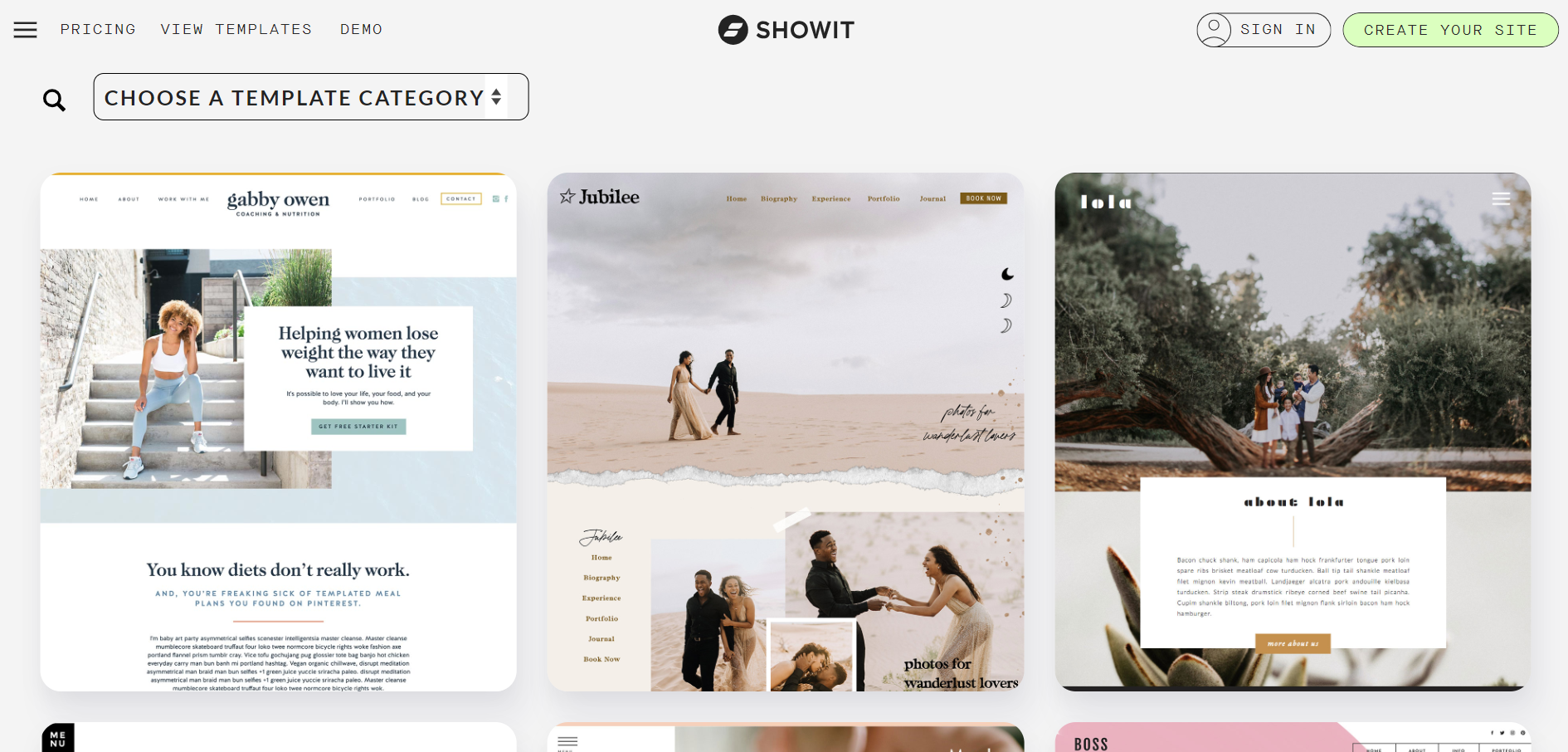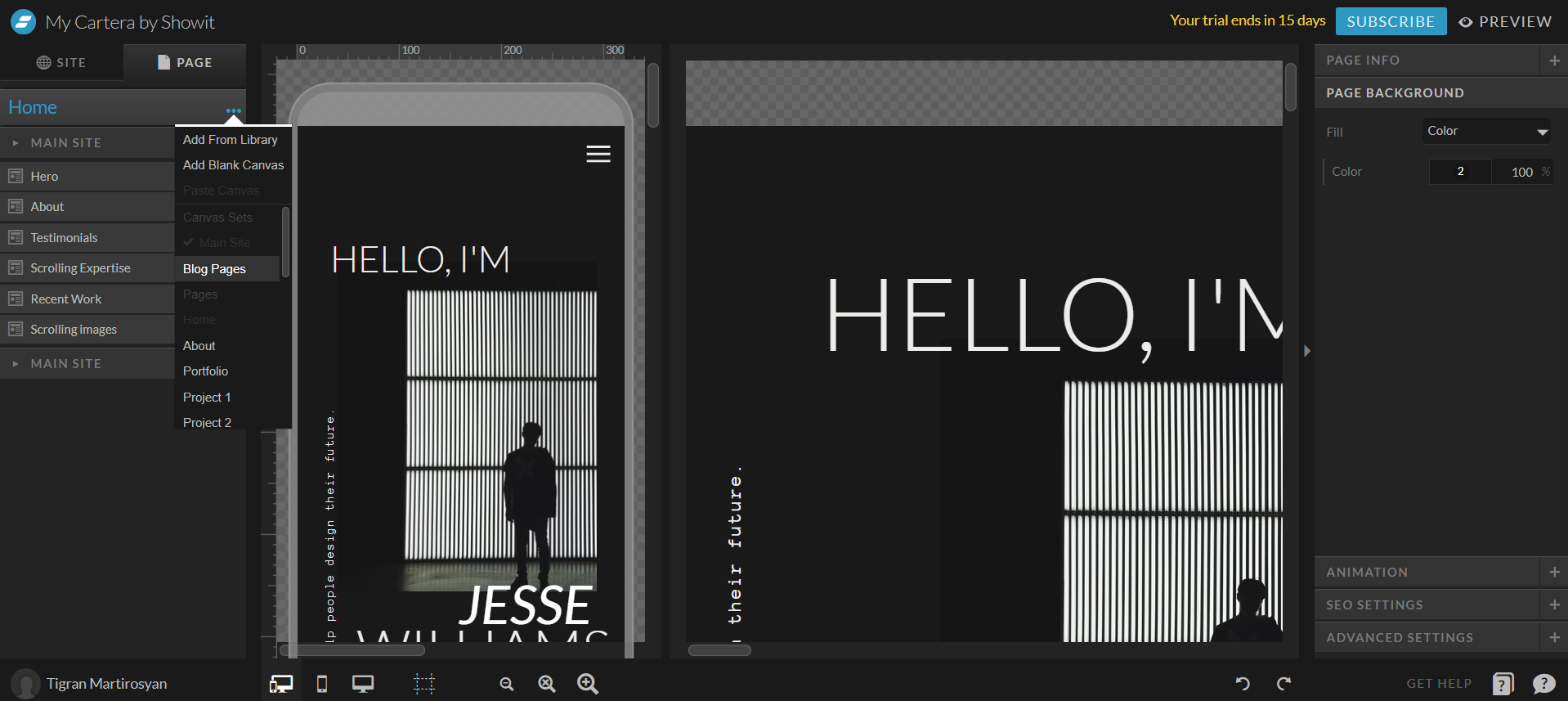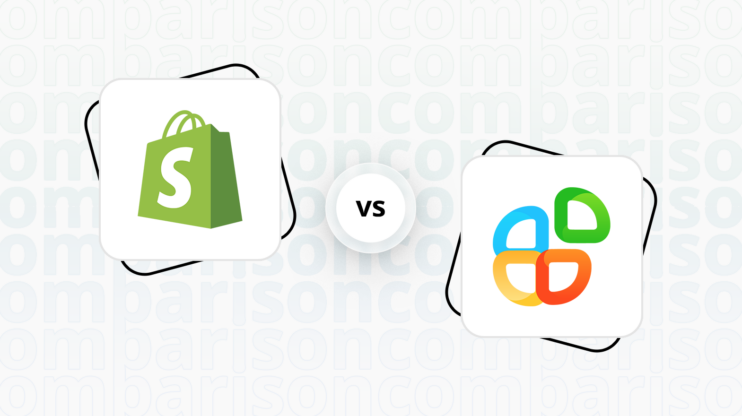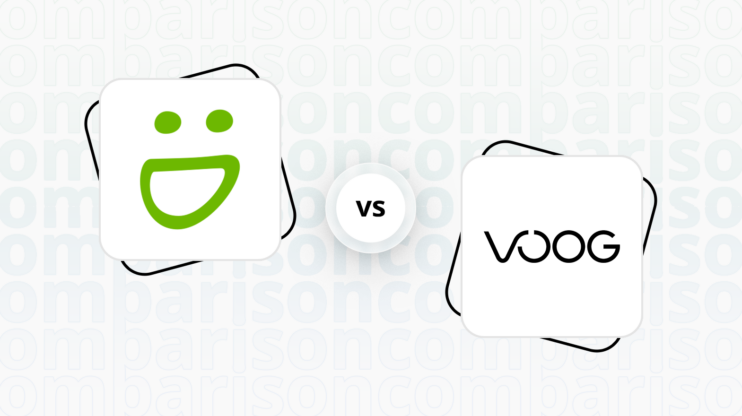Final verdict
Showit and Sellfy both offer unique strengths tailored to different user needs, but they cater to slightly different audiences.
-
Showit (Overall Grade: 6.4/10)
is a versatile website builder designed for creative professionals such as photographers, designers, and bloggers. It excels in design functionalities and ease of use, offering a highly customizable drag-and-drop interface. Showit integrates seamlessly with WordPress for blogging, providing a powerful combination of design flexibility and content management. However, its ecommerce capabilities are limited compared to dedicated ecommerce platforms. When comparing Showit vs Sellfy, Showit is ideal for users who prioritize creative control and design flexibility. -
Sellfy (Overall Grade: 6.0/10)
is an all-in-one ecommerce platform tailored for creators looking to sell digital, physical, subscription-based, and print-on-demand products. It offers a simple, user-friendly interface that allows for quick setup of an online store without advanced technical skills. Sellfy provides robust ecommerce features, including built-in marketing tools and secure payment processing via Stripe and PayPal. However, its design customization options are more limited compared to Showit. Considering Showit vs Sellfy, Sellfy is a great choice for users who prioritize ease of use and comprehensive ecommerce functionalities.

|

|
|
|---|---|---|
|
Design functionalities & templates |
8.5 |
5.2 |
|
Ease of use |
8.6 |
7.8 |
|
Ecommerce |
4.8 |
6.8 |
|
Website editors |
8.0 |
6.8 |
|
Product testing options |
8.3 |
7.3 |
|
Price |
7.9 |
7.9 |
|
Hosting quality |
7.3 |
7.3 |
|
Website speed optimization |
5.4 |
5.4 |
|
Plugins/extensions and integrations |
5.8 |
6.7 |
|
Marketing features |
7.2 |
7.1 |
|
Customer support |
6.4 |
5.8 |
|
Website security |
8.3 |
7.2 |
|
User management |
6.7 |
2.0 |
Best for ecommerce
 4.8
4.8
 6.8
6.8
Verdict
: Showit is suitable for creative professionals needing basic ecommerce features, while Sellfy is better for creators looking to sell a variety of products with more robust ecommerce tools.
-
Showit
: Showit is primarily a website builder with a focus on design and creative freedom, making it ideal for visually oriented websites. It includes basic ecommerce functions through integrations with platforms like Shopify and WooCommerce. However, it lacks comprehensive ecommerce features, making it less suitable for businesses looking to scale. When comparing Showit vs Sellfy, Showit is more about design flexibility than ecommerce prowess. -
Sellfy
: Sellfy is an all-in-one ecommerce platform tailored for creators selling digital, physical, subscription-based, and print-on-demand items. It offers a user-friendly interface and built-in marketing tools, making it easy to set up and manage an online store. Sellfy’s robust ecommerce features, including product protection and diverse payment options, make it a better choice for those focused on selling products online.
Best for informational & business websites
 8.7
8.7
 5.7
5.7
Verdict
: Showit is the superior choice for informational and business websites, offering extensive design flexibility and ease of use, while Sellfy, though capable, is more tailored towards ecommerce.
-
Showit
: Showit excels in creating visually stunning, highly customizable websites, making it ideal for creative professionals and businesses that prioritize design. Its drag-and-drop interface and dual canvas feature allow for detailed customization of both mobile and desktop views, providing a seamless user experience. With a score of 8.7, Showit stands out for its design capabilities and user-friendly approach, making it the preferred choice for informational websites. -
Sellfy
: While Sellfy is primarily an ecommerce platform, it can be used for informational websites. However, its design options and customization capabilities are limited compared to Showit. Sellfy’s strength lies in its simplicity and ease of setting up an online store, but for purely informational purposes, it may not offer the same level of flexibility and aesthetic appeal. With a score of 5.7, Sellfy is better suited for users who need a straightforward ecommerce solution rather than a highly customizable informational site.
Detailed comparison
Design functionalities & templates
Design FunctionalitiesRepresents how well each platform allows for creative design and customization of websites.Score Components:
- Template Variety (30%): Range and quality of design templates.
- Customization (30%): Flexibility and options for design alterations.
- User Interface (20%): Ease and intuitiveness of the design process.
- Responsiveness (10%): Adaptability to different devices and screen sizes.
- Innovation (10%): Unique design features and tools.
 8.5
8.5
 5.2
5.2
🏆
Winner: Showit.
If you’re looking for a platform that offers more creative control and a wide array of design features, Showit is the preferred choice.
Showit offers a wide variety of templates and designs, catering to diverse aesthetic preferences and business needs. Users can choose from an extensive collection that ranges from minimalist and sleek to bold and artistic, ensuring there’s something for every brand identity. The platform is known for its flexibility and user-friendly interface, allowing for easy customization of templates.


Compared to Showit, Sellfy provides a collection of design templates through its theme store, located in the Store Customizer. Users have the option to preview these themes before applying them to their websites. As of the latest information, Sellfy offers five main theme options: Lumi\u00e9re, Noir, Savant, Id\u00e9e, and Mode. These themes cater to various aesthetic preferences and can be published to go live on a user’s website after selection and customization.
Get a head start on website creation with AI
Create a custom website tailored to your business needs 10X faster with 10Web AI Website Builder!
Ease of use
Ease of useReflects the platform’s overall user-friendliness.Score
Components:
- Learning curve (40%): Quickness and ease of getting started.
- Interface design (30%): Simplicity and intuitiveness of layout.
- User guidance (20%): Quality of tutorials and support.
- Flexibility (10%): Adaptability to various user skills.
 8.6
8.6
 7.8
7.8
🏆 Winner: Showit
. With a score of 8.6, Showit is a highly user-friendly website builder, designed with a drag-and-drop interface that makes it easy for users to create custom websites without needing any coding knowledge. Sellfy, scoring 7.8, offers an intuitive user interface and a straightforward website builder, making it accessible for creators and small business owners without advanced technical skills. However, Showit’s higher score and wide range of customizable templates and design elements give it the edge in this category.
Learning Resources
🏆 Winner: Showit
. Showit offers a range of learning resources for users, including a comprehensive training course (Showit 101) and a more informal learning hub with videos for those who prefer visual learning. Sellfy, on the other hand, lacks in-depth learning resources and community support.
For ecommerce
EcommerceMeasures the platform’s effectiveness in supporting online business activities.Score Components:
- Ecommerce themes and templates (20%): Variety and design of templates.
- Product management (25%): Ease of managing and organizing products.
- Payment options (25%): Variety and convenience of payment methods.
- Ecommerce features (20%): Features for managing an ecommerce store.
- Integration (10%): Compatibility with external e-commerce tools and services.
 4.8
4.8
 6.8
6.8
When it comes to ecommerce, Showit and Sellfy offer different strengths. Showit, primarily a website builder, focuses on design and creative freedom, making it ideal for visually oriented websites. It includes basic ecommerce functions but lacks the comprehensive ecommerce features found in platforms like Shopify or WooCommerce. However, Showit allows integration of both the mentioned platforms for enhancing ecommerce capabilities.

|

|
|
|---|---|---|
|
Ecommerce themes and templates |
2.0 |
7.0 |
|
Product page customization |
2.5 |
6.5 |
|
Payment processing and commissions |
4.0 |
8.0 |
|
POS capabilities |
1.0 |
4.0 |
|
Payment gateways |
4.5 |
6.0 |
|
Product numbers |
3.0 |
7.5 |
|
Additional ecommerce features |
3.5 |
6.5 |
Showit ecommerce features:
- Shopify and WooCommerce integration
On the other hand, Sellfy is a user-friendly e-commerce platform designed for selling physical products, digital goods, and subscriptions. It features built-in marketing tools, content security measures, and supports payment processing via Stripe and PayPal without additional transaction fees. However, its simplicity may limit customization and advanced marketing capabilities, making it less suitable for businesses looking to scale or requiring in-depth analytics and integrations.
Sellfy ecommerce features:
- Product Listings
- Payment Gateways integration
- Product categories
Ecommerce themes & templates
Showit does not have any ecommerce specific templates, while all the templates of Sellfy are designed for online stores.
Product page customization
Showit has very basic ecommerce capabilities, primarily through its integration with WooCommerce and Shopify. Sellfy supports a diverse range of products including digital goods like music, videos, ebooks, and software, as well as physical products and print-on-demand merchandise such as t-shirts and mugs. The platform enables the sale of subscriptions, offering a means for recurring revenue. Sellfy provides tools for product protection and piracy prevention, ensuring secure file hosting and delivery. The flexibility in product offerings, combined with support for various types of goods, makes Sellfy suitable for different creators and merchants looking to sell online.
Payment processing
Showit supports e-commerce by allowing integration with third-party platforms like Shopify Lite, ThriveCart, WooCommerce, and Podia, rather than offering direct payment processing or POS capabilities. Users can add e-commerce functionalities to their Showit sites using embed codes for “Buy Buttons” or similar features from these platforms. The choice of platform depends on the user’s specific needs, including product type, store size, and budget, as each platform has its own pricing and transaction fee structures. Additionally, the platform supports integration of PayPal pay button, allowing users to pay directly through their PayPal account.
Sellfy supports two primary payment gateways, Stripe and PayPal, allowing for various payment options including credit/debit cards and localized payment methods in Europe. The platform does not charge transaction fees beyond its subscription cost, though payment processors’ standard fees apply. While Sellfy is robust in facilitating online sales with features for product management and marketing, it does not explicitly mention support for Point of Sale (POS) capabilities, indicating a focus on eCommerce rather than physical retail transactions.
Website Editors
Website EditorsEvaluates the platforms’ website building and editing capabilities.Score Components:
- Customization tools (40%): Range and power of editing features.
- Editor usability (30%): User experience within the editor.
- Design flexibility (20%): Freedom in layout and design changes.
- Update and maintenance ease (10%): Simplicity of updating and maintaining the site.
 8.0
8.0
 6.8
6.8
🏆
Winner: Showit
. Showit, with a score of 8.0, is designed for creating custom, responsive websites with a focus on ease of use, especially for photographers and creative professionals. It allows users to design their website visually with a drag-and-drop interface, eliminating the need for coding knowledge. Users can create highly customized pages by adjusting layouts, fonts, and colors, and can also incorporate multimedia elements like videos and images directly into their designs. Additionally, Showit offers deep integration with WordPress for blogging, enabling users to manage and publish blog posts within the same platform, providing a seamless experience from website design to content management.

Sellfy’s website builder, scoring 6.8, offers a straightforward and user-friendly platform for creating online stores, focusing on simplicity over advanced customization. It supports the sale of digital, physical, subscription-based, and print-on-demand products, alongside integrated marketing tools for promotion and sales optimization. Payment processing is secure and direct, utilizing popular gateways like Stripe and PayPal with no transaction fees. Despite some limitations in design customization and app integrations, Sellfy aims to provide a comprehensive e-commerce solution for entrepreneurs and creators.
Mobile editor/app
 0
0
 7.5
7.5
🏆
Winner: Sellfy
. Showit does not have a mobile editor, which means it’s not possible to edit a Showit website using a mobile browser version. On the other hand, Sellfy offers a mobile app that enables store owners to manage their online stores on the go. The app provides functionalities such as viewing store performance metrics, managing and tracking orders, and receiving customized notifications.
Users can also access summary reports of their store’s performance on a daily, weekly, or monthly basis. However, it’s important to note that it’s not possible to change the layout or the design of the website itself using the Sellfy mobile app. Despite this limitation, Sellfy still offers more mobile editing capabilities than Showit, making it the clear winner in this category.
Product testing options
Product Testing OptionsAssesses the options for trying out platform features before commitment.Score Components:
- Trial quality (40%): Extent and usefulness of the trial or free version.
- Feature accessibility (30%): How many features are available to test.
- Trial duration (20%): Length of the trial period.
- Ease of transition (10%): Smoothness of moving from trial to paid plans.
 8.3
8.3
 7.3
7.3
Overall Result
:
Showit wins
. Showit scores 8.3, slightly higher than Sellfy’s 7.3. Both platforms offer a 14-day free trial and a 30-day money back guarantee. However, Showit allows users to test all premium features during the trial period, providing a more comprehensive testing experience.

|

|
|
|---|---|---|
|
Free Plan |
No | No |
|
Trial Duration |
14 days | 14 days |
|
Testing Premium Features |
All features during free trial |
During the free trial |
|
Money Back Guarantee |
30 days | 30 days |
Price
PriceLooks at the cost-effectiveness and value for money of each platform.Score Components:
- Plan value (40%): What each pricing tier offers.
- Transparency and clarity (30%): Clearness of pricing structures.
- Flexibility of plans (20%): Range of options to suit different budgets.
- Hidden costs (10%): Additional expenses not included in the plan.
 7.9
7.9
 7.9
7.9
Showit and Sellfy have similar pricing structures, but Showit offers a custom plan for high-traffic blogs, while Sellfy does not have an enterprise plan. Both offer discounts for annual billing.

|

|
|
|---|---|---|
|
$20-$25 |
Showit ($24/month): Ideal for sites without a blog. Includes 20GB storage and secure certificate. Regular design backups stored for 7 days. Value for price: 6.0 |
No offering at this amount. |
|
$25-$30 |
Showit + Basic Starter Blog ($29/month): For new blogs. Includes everything in the Showit plan, plus blog-specific features. 20GB storage, up to 10k monthly visitors, daily backups stored for 30 days, pre-installed plugins (no additional plugins are permitted), 1 WordPress user. Value for price: 7.0 |
Starter ($29/month): Ideal for growing businesses with sales up to $10k/year. Offers unlimited products, digital and subscription products, domain connection, and 2,000 email credits. Annual savings available. Value for price: 7.5 |
|
$30-$40 |
Showit + Advanced Blog ($39/month): For migrating or high-traffic blogs with custom plugin needs. Includes everything in the Basic Starter Blog plan, plus up to 25k monthly visits, unlimited number of plugins, unlimited number of WordPress users, Free advanced blog migration from WordPress or Squarespace and FTP access. Value for price: 8.0 |
No offering at this amount. |
|
$60-$80 |
Showit + Advanced Blog 50k ($69/month): Includes everything in the Showit + Advanced Blog plan, with possibility to install custom WordPress plugins, 30 GB storage, up to 50k visitors monthly, and possibility to migrate Squarespace and WordPress blog posts. Value for price: 8.5 |
Business ($79/month): Targets businesses with up to $50k in yearly sales, offering everything in the Starter plan plus 10,000 email credits, product and store design migration, product upselling, cart abandonment tools, and Sellfy branding removal. Value for price: 8.0 |
|
$100+ |
Showit + Advanced Blog 100k ($129/month): Includes everything in the Showit + Advanced Blog plan, with possibility to install custom WordPress plugins, 50 GB storage, up to 100k visitors monthly, and possibility to migrate Squarespace and WordPress blog posts. Value for Price: 9.0 |
Premium ($159/month): For businesses with up to $200k/year in sales. Includes everything in the Business plan plus 50,000 email credits, product migration, and priority support. Annual savings are also offered. Value for Price: 8.5 |
location. As a result in rare cases the prices displayed here can differ from the ones you see on their
websites.
Hosting quality
Hosting
qualityExamines the reliability and performance of the hosting solutions.Score Components:
- Uptime (40%): Consistency and reliability of website availability.
- Speed (30%): Loading times and performance.
- Bandwidth and storage (20%): Sufficiency of resources provided.
- Data centers (10%): Quality and distribution of hosting infrastructure.
 7.3
7.3
 7.3
7.3
Winner: Tie
. Both Showit and Sellfy offer hosting services, but there are differences in their offerings. Showit provides managed WordPress hosting with a 99.9% uptime guarantee, while Sellfy has a slightly higher uptime of 99.99% but without a guarantee. Neither of the builders disclose information about their data centers. Given these factors, both builders have the same hosting quality score.

|

|
|
|---|---|---|
|
Do they offer hosting? |
Yes, Managed wordpress hosting, with daily backups and 20GB storage. | Yes |
|
Type of hosting: |
Managed WordPress hosting | Sellfy does not disclose the hosting type |
|
Uptime: |
99.9% | 99.99% |
|
Uptime Guarantee: |
Yes, 99% | No |
|
Data Centers: |
Showit does not disclose any information about its data centers. | Sellfy does not disclose the locations of its data centers |
Website Speed Optimization
Website Speed OptimizationEvaluates optimization of website loading timesScore Components:
- PageSpeed Score (30%): Google’s score indicating performance optimization.
- Loading Time (30%): The average time until a website is fully interactive.
- Mobile Optimization (15%): Optimization effectiveness for mobile devices.
- Resource Optimization (15%): Optimizing images, scripts, and other heavy resources.
- CDN Usage (10%): Use of CDN to enhance speed across geolocations.
 5.4
5.4
 5.4
5.4
🏆 Winner: Tie
Both Showit and Sellfy have the same score for website speed optimization, and neither provides specific information about their Core Web Vital improvements. Therefore, the comparison is mainly based on their general strategies for speed optimization.

|

|
|
|---|---|---|
|
Focus |
Optimization plugins, Caching |
Code Minification, Caching, Image Optimization |
|
Performance Tools |
Not specified |
Not specified |
|
Key Strategies |
Optimization plugins, Caching |
Code Minification, Caching, Image Optimization |
|
Load Times |
Varies depending on optimization and website complexity |
Varies depending on optimization and website complexity |
|
Page Speed Scores Range |
Varies depending on optimization and website complexity |
Varies depending on optimization and website complexity |
|
Core Web Vitals Improvement |
Not disclosed |
Not provided |
Showit, a drag-and-drop website builder designed primarily for creative professionals, focuses on optimization plugins and caching as their main strategies for speed optimization. However, they do not disclose any specific information about their Core Web Vital improvements.
Sellfy, an all-in-one eCommerce platform tailored for creators, focuses on code minification, caching, and image optimization as their main strategies for speed optimization. Like Showit, Sellfy does not provide any specific information about their Core Web Vital improvements.
Get a head start on website creation with AI
Create a custom website tailored to your business needs 10X faster with 10Web AI Website Builder!
Plugins and integrations
Plugins and integrationsMeasures the range and effectiveness of additional plugins and integrations.Score Components:
- Variety of options (40%): Range of available add-ons.
- Integration smoothness (30%): Ease of integrating plugins into the site.
- Quality of plugins (20%): Functionality and reliability of the options.
- Custom integration capabilities (10%): Support for custom or third-party integrations.
 5.8
5.8
 6.7
6.7
🏆 Winner: Sellfy.
With a score of 6.7, Sellfy takes the lead in this category. It offers a variety of integrations, including Google Analytics, Facebook Live Chat, and Zapier, which enhance ecommerce functionality and automate workflows. The integration with Zapier notably expands possibilities by connecting to thousands of apps, supporting a broad range of automation options.
On the other hand, Showit, with a score of 5.8, offers a variety of plugins primarily for users with the Advanced Blog plan, enhancing website functionality across SEO, spam protection, and more. However, the availability and use of these plugins are contingent upon the subscription tier, with higher tiers required for broader plugin compatibility and additional features. Notably, compatibility issues exist with certain WordPress plugins, necessitating alternative solutions or adjustments for optimal functionality.
Marketing Features
Design FunctionalitiesRepresents how well each platform allows for creative design and customization of websites.Score Components:
- Template Variety (30%): Range and quality of design templates.
- Customization (30%): Flexibility and options for design alterations.
- User Interface (20%): Ease and intuitiveness of the design process.
- Responsiveness (10%): Adaptability to different devices and screen sizes.
- Innovation (10%): Unique design features and tools.
 7.2
7.2
 7.1
7.1
🏆
Overall Winner: Showit
. Showit stands out for its extensive third-party integrations for email marketing and analytics, as well as its unique dual canvas interface for independent design of mobile and desktop views. Sellfy, on the other hand, is strong in SEO and offers a simple, user-friendly interface for quick setup of an online store.

|

|
|
|---|---|---|
|
SEO Tools |
|
|
|
Email Marketing |
✓ (through third-party integrations) |
|
|
Blogging |
|
|
|
Social Media Integration |
|
|
|
Analytics and Reporting |
✓ (through integration of Google Analytics) |
|
|
Ads and Promotions |
✓ (through third-party integrations) |
|
Customer Support
Customer supportEvaluates the quality and availability of support options.Score Components:
- Response time (40%): Speed of support responses.
- Support quality (30%): Effectiveness and helpfulness of the support.
- Availability (20%): Range of support channels (phone, chat, email).
- Resource richness (10%): Quality of self-help and educational materials.
 6.4
6.4
 5.8
5.8
🏆 Winner: Showit
. Comparing Showit vs Sellfy, Showit takes the lead in this category with a customer support score of 6.4. Showit offers email support from Monday to Friday, 7 AM to 11 PM Arizona Time, with a typical response time of 1-2 hours. They also provide chat support during business hours for more immediate assistance, and limited support on weekends.
Sellfy, on the other hand, provides 24/7 customer support, which is a significant advantage. However, the lack of phone support and live chat options limits the immediacy of the assistance available. Despite being available around the clock, Sellfy’s support channels are primarily limited to email and possibly a knowledge base, resulting in a lower customer support score of 5.8.
Security
SecurityLooks at the platforms’ security measures and data protection.Score Components:
- Data protection (40%): Safeguards for user and customer data.
- SSL and encryption (30%): Implementation of secure connections.
- Compliance (20%): Adherence to industry security standards.
- Regular updates (10%): Frequency of security updates and patches.
 8.3
8.3
 7.2
7.2
🏆
Winner: Showit
. Showit’s security measures are comprehensive, with a focus on data privacy and protection. They adhere to GDPR guidelines and use Amazon’s S3 for secure and redundant data storage. Showit also provides free SSL certificates for secure HTTPS connections and automated backups. For WordPress-integrated sites, additional protections such as firewall protection, disc write protection, and automatic updates for WordPress Core, PHP, and MySQL are in place.
On the other hand, Sellfy also employs several security measures to safeguard sellers and their digital products from unauthorized access, fraud, and piracy. These measures include the use of secure payment processors like Stripe and PayPal, unique download links for each purchase, limited download attempts, and additional tools like PDF stamping to deter content sharing. However, Showit’s security score is higher, making it the winner in this category.
AI Capabilities
AI capabilitiesMeasures the effectiveness of AI-driven features and tools.Score Components:
- Automation efficiency (40%): Impact of AI on streamlining processes.
- Personalization (30%): AI-driven customization for users or customers.
- AI-Assisted design (20%): Role of AI in website design and functionality.
- Data analysis (10%): Use of AI in interpreting user data and analytics.
 0
0
 0
0

|

|
|
|---|---|---|
|
Personalized Design |
|
|
|
SEO Optimization |
|
|
|
Customer Behavior Analysis |
|
|
|
Sales Predictions |
|
|
|
Inventory Management |
|
|
|
Content Generation |
|
|
🏆 Winner: None
. Neither Showit nor Sellfy utilize AI capabilities in their platforms. Both platforms focus on providing a user-friendly interface for building websites, but do not offer AI-driven features or tools.
User Management
User ManagementAssesses the platforms’ capabilities in managing user roles, permissions, and accessibility.Score Components:
- Role Customization (40%): Flexibility in creating and defining user roles and
permissions. - Ease of Management (30%): User interface and tools for managing users.
- Access Control (20%): Effectiveness of access control measures for different user
levels. - Scalability (10%): Ability to manage a growing number of users efficiently.
 6.7
6.7
 2.0
2.0
🏆 Winner: Showit
. Showit and Sellfy have different approaches to user management.
- Showit allows only one user on lower plans, but on its Showit + Advanced Blog plan, the platform allows an unlimited number of users with different access levels.
- Sellfy, on the other hand, does not support adding multiple users or staff to a single account.
Showit User Roles and Access Levels:
| Role | Description | Access Highlights |
|---|---|---|
| Administrator | Users with full access to all administration features, including Elementor settings. | Can edit all content, Access to Elementor settings, Can install plugins and themes, Can manage users |
| Editor | Users who can manage and publish content including pages and posts. | Can edit pages/posts created with Elementor, Cannot access Elementor settings, Can manage categories, tags, and links, Can moderate comments |
| Author | Users who can publish and manage their own posts. | Can create posts with Elementor, Cannot edit pages, Limited access to media library, Cannot access Elementor settings |
| Contributor | Users who can write and manage their own posts but cannot publish them. | Can create content with Elementor, Cannot publish or edit pages, No access to Elementor settings, Submissions require review by higher-level roles |
Unfortunately, Sellfy does not provide any user roles or access levels as it does not support multiple users on a single account.
Additional Features

|

|
|
|---|---|---|
|
SSL Certificate |
|
|
|
Custom Domain |
|
|
|
Free Custom Domain Included |
|
|
|
International Domains |
|
|
|
Mobile Responsive |
|
|
|
Page Speed |
|
|
|
Website Builder Mobile App |
|
|
|
Convert a Website To An App |
|
|
|
Website Analytics |
|
|
|
Multilingual Sites |
|
|
|
Multiple Users |
|
|
User Feedback
Showit, designed for creative professionals, does not have available user feedback on G2. However, its unique dual canvas interface and seamless integration with WordPress are often highlighted as key features that provide a high degree of customization and control over website appearance on different devices.
Sellfy, on the other hand, has a G2 rating of 3.9/5 from 52 reviews. User feedback emphasizes its efficient and compact online store setup, user-friendly interface, and internal marketing tools. Users appreciate the customization options and payment processing integrations like PayPal and Stripe. However, some criticisms include mobile site speed issues, a desire for clearer insights, limitations on customization, and some inefficiencies in customer service.
The making of this blog
We followed a clear, step-by-step process to write and research this article.
FAQ
Which platform is better for creative professionals, Showit or Sellfy?
Can I sell products on both Showit and Sellfy?
Which platform offers better customer support, Showit or Sellfy?
How do Showit and Sellfy compare in terms of pricing?
Which platform is easier to use for beginners?
Can I manage multiple users on Showit and Sellfy?
Which platform is better for SEO and marketing?
Are there any AI capabilities in Showit or Sellfy?















